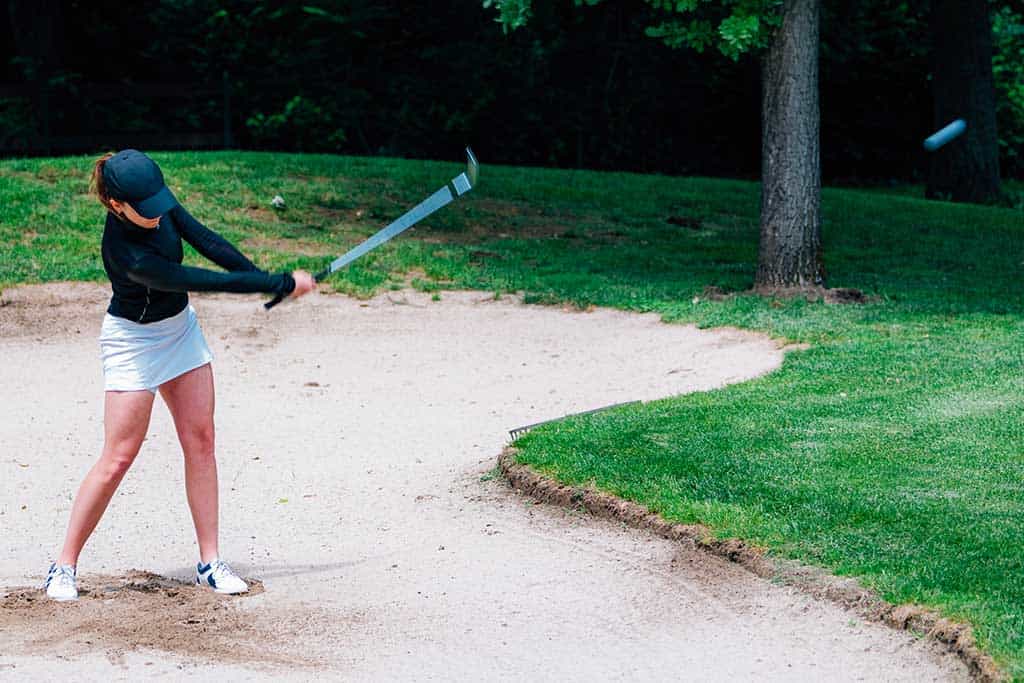Table of Contents
Learn How to Play Golf
By reading this article, you will learn: – Basics of golf such as the aim of the game, scoring, and playing the ball as it lies. – Information about golf equipment including clubs, balls, and other essentials. – Rules, etiquette, handicaps, glossary, and tournaments associated with golf.
Golf, a game of precision, patience, and tradition, has long been a beloved sport across the globe. If you’re eager to learn how to golf or simply refine your existing skills, you’ve come to the perfect place. The National Golf Club of Louisiana is not only a steward of the sport but also a treasure trove of information for both novices and seasoned golfers. Here, we dive into the essentials of the game, from understanding the basic rules and etiquette to selecting the right equipment and comprehending golf handicaps. Let’s tee off into this comprehensive guide that will set you on course for golfing success.
How to Play Golf
Golf is a sport that involves striking a ball with clubs, aiming to get it from the tee box to the hole in the fewest strokes possible. While it may sound straightforward, the game requires strategy, skill, and a good understanding of the golf course layout.
Understanding the Game Structure
A game of golf typically consists of 18 holes, each with its unique challenges. Players start at the tee box, progress through the fairway, navigate hazards like sand bunkers and water, and ultimately aim for the green where the hole is located.
The Basic Swing
The golf swing is a complex motion that combines power and precision. It involves gripping the club correctly, standing with the right posture, and swinging with a smooth motion that transfers energy from your body to the ball. Mastering the swing is fundamental to good golf play.

Insider Tip: For beginners, focusing on a consistent and controlled swing is more important than power. It’s better to play it safe and steady.
Progression Through the Course
As you move through the course, you will encounter different types of shots, such as drives, approach shots, chips, and putts. Each requires a different club and technique. Learning when and how to use various clubs is key to improving your game.
For a detailed breakdown of the golf swing, visit our guide on The Basics of the Golf Swing.
Golf Basics
The Setup
Before you can swing, you need to set up correctly. This involves aligning your body to the target, positioning the ball correctly in your stance, and ensuring your grip is firm yet comfortable.
Understanding Golf Courses
No two golf courses are the same. They vary in length, layout, and difficulty. Familiarize yourself with the course you’re playing by studying the scorecard and course guide before your round.

Practicing Your Skills
Practice makes perfect, and this is especially true in golf. Utilize driving ranges and practice greens to work on your long and short games, respectively. Regular practice sessions are crucial to developing consistency.
Find out more about beginning your golf journey with these 5 things to know when beginning to play golf.
Overcoming Golfing Frustrations
Have you ever felt frustrated with your golf game? John, a 35-year-old accountant, used to struggle with his golf swing. No matter how much he practiced, he couldn’t seem to hit the ball straight. After seeking advice from a golf pro, he realized that his grip was the root of the issue. By making a simple adjustment, John was able to improve his swing and enjoy the game more than ever.
Finding the Right Golf Equipment
When Sarah, a marketing manager, first started playing golf, she found herself overwhelmed by the variety of golf clubs available. Unsure of which ones to invest in, she sought guidance from a knowledgeable friend who helped her understand the different types of clubs and which ones would best suit her playing style. With the right equipment in hand, Sarah was able to enhance her performance on the course and feel more confident in her game.
Golf Equipment
Clubs Selection
Golfers are allowed to carry up to 14 clubs in their bag, but you don’t need that many to start. A basic set includes woods for long shots, irons for mid-range shots, wedges for short shots, and a putter for the green.
Golf Balls
Choosing the right golf ball can affect your play. There are different types for various levels of skill and styles of play. Beginners should opt for balls that prioritize durability and control.

Insider Tip: When starting, use the same type of ball consistently to understand how it reacts to your shots.
Other Essential Equipment
In addition to clubs and balls, other gear includes a golf bag, tees, a glove to improve grip, and appropriate attire. Shoes with soft spikes or specialized tread will help maintain stability during your swing.
To explore a wider range of equipment, consider our service for golf lessons to get personalized advice.
Golf Rules
Basic Rules of Play
The rules of golf are established by the R&A and the United States Golf Association (USGA). The most fundamental rule is to play the ball as it lieshit the ball where it lands without moving it or altering the conditions.
Penalty Strokes
Penalty strokes are added to your score for rule infractions like hitting a ball out of bounds or into a water hazard. Knowing these rules can help avoid unnecessary penalties.

Insider Tip: Familiarize yourself with the most common rules to keep the game fair and enjoyable for everyone.
Keeping Score
The score in golf is kept by counting the number of strokes taken on each hole. The total number of strokes taken throughout the round constitutes the final score. The lower the score, the better.
For a comprehensive understanding of scoring and improving it, check out our tips on how to shoot good golf scores.
Golf Etiquette
Respect for Other Players
Always show consideration for other players on the course by not disturbing their play. This includes being silent during their shots and avoiding moving in their line of sight.
Pace of Play
Maintaining a good pace of play is important. Be ready to take your shot when it’s your turn, and if your group is slower than the group behind, allow them to play through.

Insider Tip: If you’re searching for a lost ball, signal the group behind to play through after a few minutes to maintain the flow of the game.
Taking Care of the Course
Part of golf etiquette involves taking care of the course. This includes repairing divots, smoothing out bunkers after playing from them, and fixing ball marks on the greens.
Learn more about golf etiquette with our guide on taking your kids to play golf and etiquette tips.
Golf Handicaps
What is a Golf Handicap?
A golf handicap is a numerical measure of a golfer’s potential ability. It allows players of differing skill levels to compete on an equitable basis. The lower your handicap, the better golfer you are presumed to be.
How to Calculate Your Handicap
Your handicap is calculated based on your scores from previous rounds, the difficulty of the courses played, and adjustments for abnormal playing conditions. This calculation can be done through golf associations or using online tools.
For lessons tailored to your skill level and handicap improvement, our service for golf lessons is ideal.
Golf Glossary
Golf has a language all its own. Understanding terms like “birdie,” “bogey,” “eagle,” and “par” is essential. Each term relates to the number of strokes taken in relation to the par of the hole.

Insider Tip: Keep a small glossary with you on the course until you’re familiar with the terms.
Golf Tournaments
Types of Tournaments
There are various types of golf tournaments, from stroke play to match play and team formats like best ball or scramble. Each has its own set of rules and strategies.
Major Golf Tournaments
The four major championships in professional golf are The Masters, the US Open, The Open Championship, and the PGA Championship. These attract the world’s best players and are a spectacle for golf fans.
For an extensive list of tips applicable to both casual and competitive play, browse our 29 tips for every golfer.
Conclusion
Embarking on the journey of learning how to golf is both thrilling and challenging. By understanding the basics, equipping yourself with the right gear, and playing by the rules and etiquette, you’ll be well on your way to enjoying all that this great game has to offer. Remember, golf is not only about perfecting your swing or scoring low it’s also about the experiences you gain and the connections you make on the course.
As you continue to develop your golf skills, consider the wealth of resources offered by the National Golf Club of Louisiana. From detailed guides to personalized lessons, we are here to support and enhance your golfing journey.
Ready to take your game to the next level? Start with a solid warm-up routine detailed in our guide on improving your golf game with an easy warm-up routine, or delve into mastering golf: how many lessons to start and restart your golf journey. Happy golfing!





